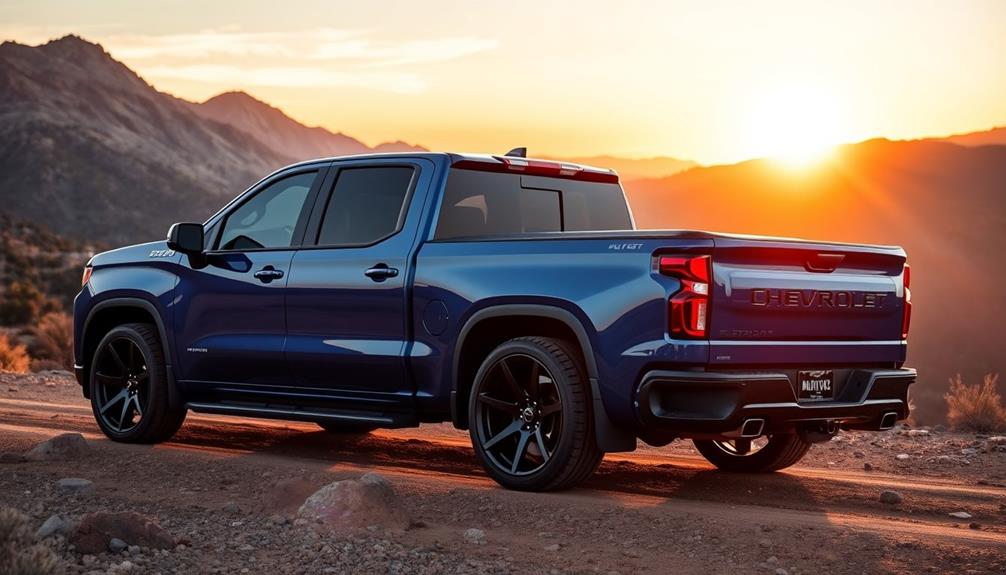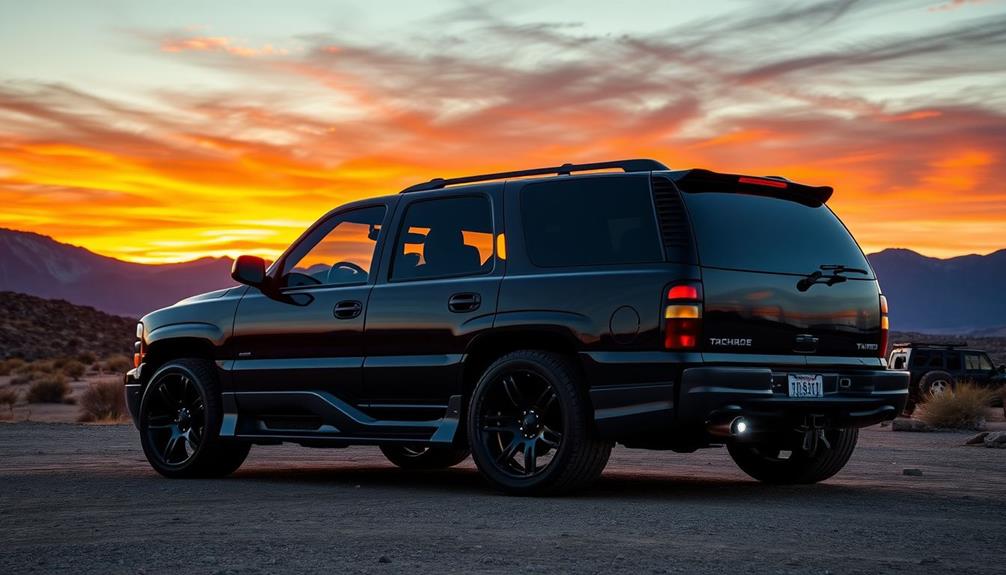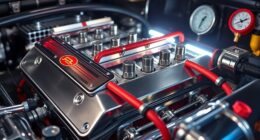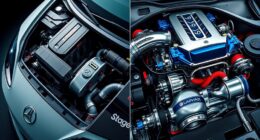Tuning your 2020 Chevrolet Silverado can transform it into a performance powerhouse. You can boost horsepower and torque considerably, enhancing acceleration and towing capabilities. Options like the Pulsar LT Module or HP Tuners let you access new performance metrics, while disabling features like Auto Start/Stop improves drivability. However, you may face challenges due to factory ECM restrictions and costs associated with tuning. Combining engine and transmission mods guarantees a holistic performance upgrade that makes every drive exhilarating. Curious about the most effective tuning strategies to maximize your Silverado's potential? There's plenty more to explore to achieve peak performance.
Key Takeaways
- Optimize your Silverado's performance by utilizing the Pulsar LT Module for increased speed governor limits and improved driving experience.
- Enhance horsepower and torque with custom engine and transmission tunes tailored for towing and acceleration improvements.
- Disable features like DFM and Auto Start/Stop to improve drivability and responsiveness during daily driving conditions.
- Invest in aftermarket mods like cold air intakes and performance exhaust systems to maximize overall vehicle efficiency and responsiveness.
- Collaborate with experienced tuners and utilize data logging to identify tuning needs, ensuring a comprehensive approach to performance enhancements.
Tuning Options Overview
When it comes to tuning your 2020 Chevrolet Silverado, you've got a variety of options that can enhance both performance and drivability. A solid tuning options overview starts with the Pulsar LT tuning module, designed to boost your speed governor limits. This module can give you that sportier driving experience you've been craving.
For those looking to take things a step further, HP Tuners is the go-to method for ECM reprogramming. While it requires 10 credits and an access fee, it's a costly but effective option that can unleash your truck's full potential.
You can also consider engine and transmission modifications, which greatly improve towing capabilities and overall performance metrics. Many enthusiasts are keen on disabling features like Dynamic Fuel Management (DFM) and Auto Start/Stop, as these tweaks can enhance drivability and performance.
With major breakthroughs in tuning advancements, you'll find that the restrictive programming measures from manufacturers on newer models create a demand for effective and innovative solutions.
Performance Enhancements Achieved
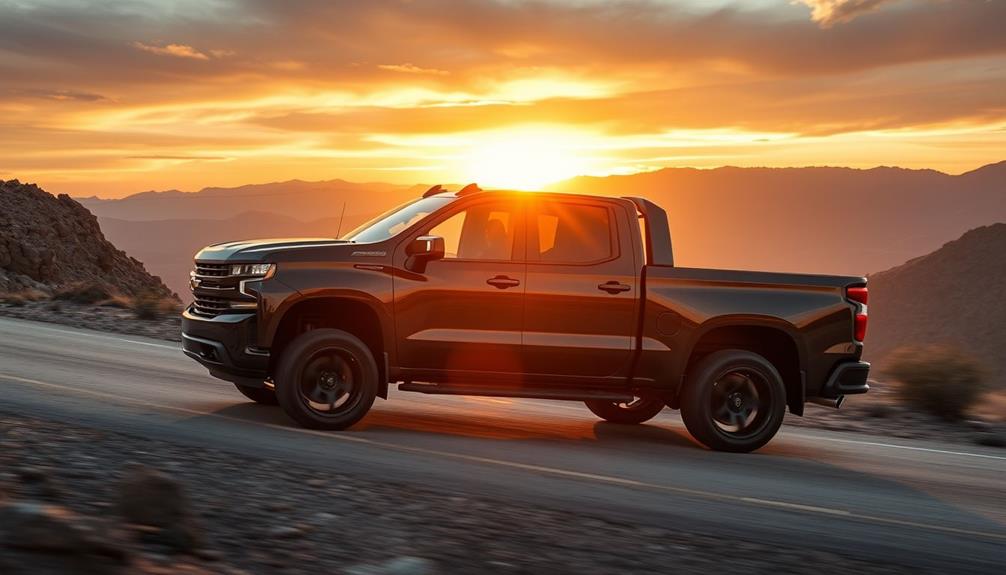
Performance tuning for your 2020 Chevrolet Silverado can lead to impressive gains, often boosting horsepower and torque by noticeable margins. These enhancements greatly improve acceleration and towing capabilities, making your truck not just a workhorse but a performance powerhouse.
By incorporating various modifications, such as:
- Engine and transmission tunes that optimize drivability
- Disabling features like DFM/AFM for smoother power delivery
- Upgrading to high octane fuel paired with custom tuning for better highway performance
You'll notice a remarkable difference in performance. Users in the tuning community have reported that these adjustments, especially when combined with aftermarket modifications like cold air intakes and performance exhaust systems, yield considerable benefits.
Although these enhancements might offer single-digit horsepower gains at the wheels, they collectively improve overall vehicle efficiency and responsiveness.
Utilizing tuning tools like HP Tuners also allows you to customize engine parameters, tailoring your Silverado's performance to your specific driving preferences.
Whether you're comparing it to a GMC Sierra or simply seeking to elevate your driving experience, performance tuning will certainly transform your pickup into something extraordinary.
Challenges in Modern Tuning
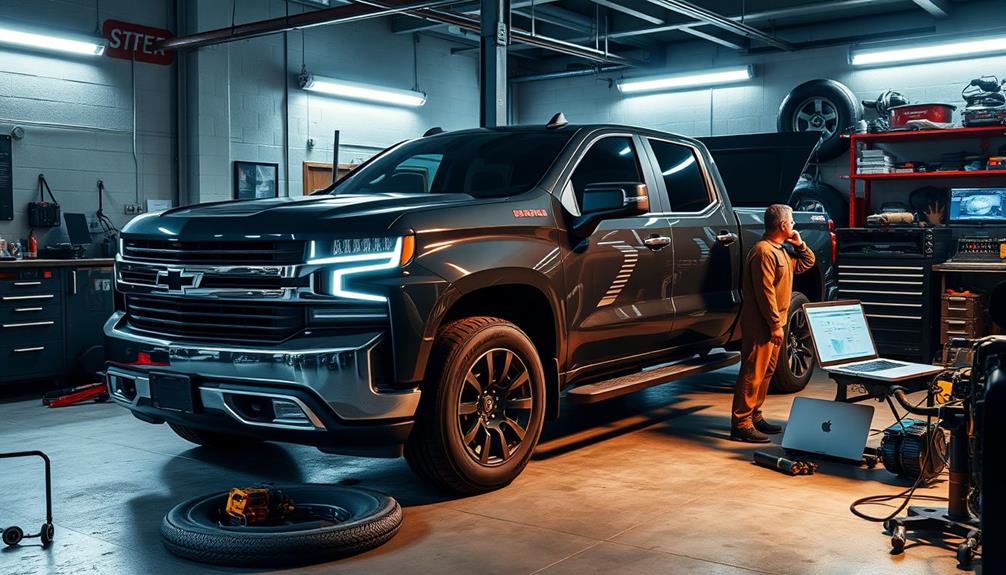
Tuning your 2020 Chevrolet Silverado presents unique challenges that can frustrate even the most seasoned enthusiasts. One major hurdle is the factory ECM, which restricts access to non-GM tuning tools. To use HP Tuners for reprogramming, you'll need to purchase 10 credits and pay an access fee, with each credit costing $50. This can quickly add up, making tuning a costly endeavor.
Moreover, the integration of AI and advanced traction control systems complicates performance adjustments. Many aftermarket tuners struggle to navigate these technologies, impacting tuning reliability and your ability to enhance performance effectively. You might find yourself longing for the flexibility of previous Silverado generations, where more extensive modifications were possible without the same level of restriction.
Achieving significant performance gains often means tuning both the engine and transmission thoroughly, as limitations in one area can hinder overall improvements. This interconnectedness makes it essential to approach your tuning strategy holistically.
While the modern Chevy Silverado offers impressive capabilities, getting the most out of it requires patience and a willingness to tackle these modern challenges head-on.
Technology and Control Systems
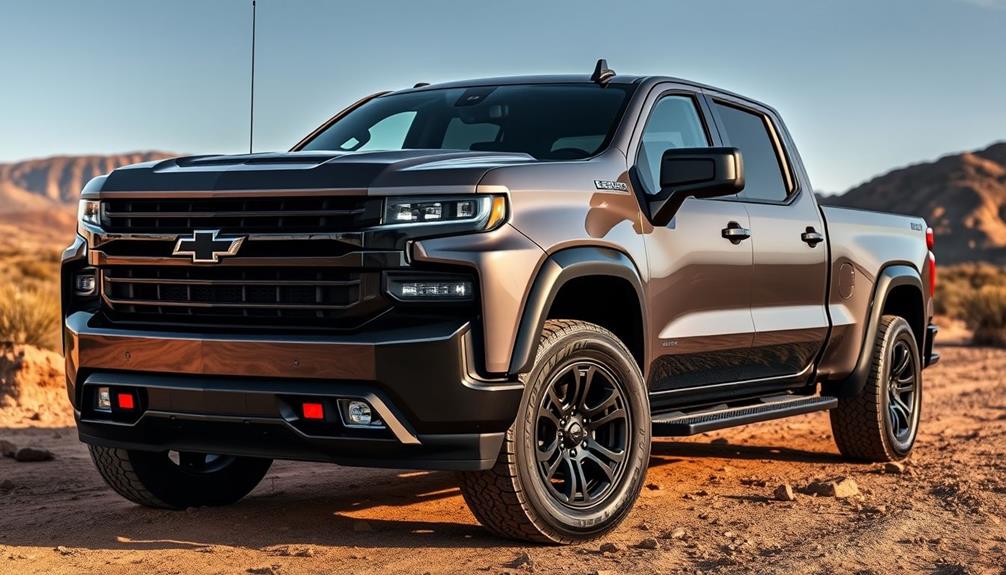
Modern technology and control systems in the 2020 Chevrolet Silverado greatly enhance driving stability and performance, but they also complicate the tuning process. As you explore modifying your new truck, it's crucial to understand how these advanced systems work.
For instance, the advanced traction control systems kick in at speeds above 35 MPH, providing stability during acceleration and cornering. However, this feature can be a double-edged sword when tuning.
Consider these factors before proceeding with modifications:
- Artificial Neural Networks: These control systems may not behave as expected after you make changes, complicating your tuning efforts.
- Limited Customization: Unlike older models, the absence of custom wheel sensor harnesses in the new Silverado limits your tuning options.
- Restrictive Programming: Manufacturers have tightened programming measures, making it harder to implement modifications compared to previous models.
As you navigate the tuning landscape, keep in mind that advancements in vehicle control technologies require careful consideration. Mismanagement of automatic systems can introduce risks, so make sure you approach tuning with a strategic mindset to maximize your Silverado's performance potential.
Community Experiences and Insights

Many Silverado owners have found themselves maneuvering the challenges of tuning in the 2020 model year, often sharing their experiences and insights within the community. One common frustration is the restrictive ECM programming, which limits tuning options compared to older models.
Many users have disabled features like DFM/AFM and Auto Start/Stop to improve drivability, even if it impacts fuel economy.
In the community, you'll find mixed results when using popular tuning tools like HP Tuners and Diablo Sport. While some enthusiasts report noticeable performance gains, others experience minimal improvements, highlighting the variability in tuning outcomes.
Many users advocate for custom tuning, emphasizing that professional ECM tuning often yields better power and fuel efficiency than off-the-shelf solutions.
As you engage with fellow Silverado owners, you'll notice that the community stresses the importance of collaboration. Sharing experiences and insights helps everyone navigate the evolving landscape of vehicle modifications and performance enhancements.
Transmission Tuning Considerations

When tuning your Chevrolet Silverado's transmission, you can considerably boost acceleration performance by optimizing shift points and cutting back on torque management.
This all-encompassing approach, combining both transmission and engine tuning, guarantees you get the most out of your vehicle's dynamics.
You'll likely notice a marked improvement in shift responsiveness and overall drivability, enhancing your driving experience.
Enhanced Acceleration Performance
Enhancing your Chevrolet Silverado's transmission through tuning can lead to markedly improved acceleration performance. By fine-tuning shift points and minimizing torque management, you'll experience quicker throttle response that transforms your trail boss into a dynamic powerhouse. This tuning allows for a more engaging driving experience, whether you're steering through city streets or tackling rugged terrains.
Consider these key benefits of transmission tuning:
- Improved Shift Response: Custom tunes can reduce lag between shifts, providing more immediate acceleration.
- Manual Shifting Modes: Accessing this feature gives you greater control over gear changes, enhancing your driving experience.
- Increased Shift Firmness: A firmer shift can deliver a more connected feel, making your Silverado feel more like a performance vehicle.
Users often report significant improvements in their 0-60 mph times when they pair transmission tuning with engine modifications.
Remember, effective acceleration performance comes from a well-rounded approach. Integrating transmission tuning alongside engine tweaks guarantees you get the most out of your Silverado, allowing both systems to work harmoniously for peak power delivery.
Torque Management Reduction
Reducing torque management in your transmission tuning can dramatically enhance your Silverado's performance. By implementing torque management reduction, you'll experience quicker acceleration and improved responsiveness during gear shifts. This means less delay in power delivery, allowing you to feel the difference in throttle response and acceleration times, especially in high-performance scenarios.
Adjusting the torque management parameters can optimize shifts, which is particularly beneficial when towing or hauling. You'll maintain better power throughout the RPM range, making those heavy loads feel lighter. Many tuners report significant improvements once they modify these settings, turning your pickup into a true powerhouse.
However, keep in mind that transmission tuning, including torque management adjustments, requires careful data logging and analysis. You want to find the right balance between performance gains and drivability.
While reducing torque management can give you immediate performance benefits, it's essential to take into account the long-term impact on your drivetrain components and overall vehicle reliability. A well-thought-out approach will guarantee that your Silverado not only performs well now but continues to do so for years to come.
Comprehensive Tuning Approach
Achieving a well-rounded tuning strategy for your 2020 Chevrolet Silverado goes beyond just adjusting torque management.
Transmission tuning plays a critical role in enhancing your vehicle's performance. By improving shift points and reducing torque management, you'll experience better acceleration and a more responsive driving experience.
Consider these key aspects when tuning your transmission:
- Data Logging: Start by logging initial data to identify specific tuning needs.
- Unlocking TCM: This process may add complexity and an additional cost of $200 to $400, but it's essential for deeper modifications.
- Engine Collaboration: Pair transmission tuning with engine upgrades for maximum performance gains.
Implementing these changes can greatly improve throttle response and gear changes.
Many users have found that tuning makes a difference, especially when towing or driving under load conditions.
Additionally, if your Silverado has the Auto Start/Stop feature, tuning can enhance its functionality, ensuring your truck performs effectively during every drive.
Frequently Asked Questions
How Can I Increase the Horsepower of My Silverado?
To increase your Silverado's horsepower, consider installing a performance tuner, upgrading air intakes and exhaust systems, using high-octane fuel, and disabling Dynamic Fuel Management. These modifications can greatly enhance your truck's performance and responsiveness.
How Can I Increase the Horsepower of My Silverado?
Think of your Silverado as a wild stallion. To release its power, consider performance programmers, high-octane fuel, and aftermarket upgrades. These enhancements can ignite horsepower and torque, turning your truck into a true beast on the road.
What Is the Common Problem With the 2020 Silverado?
The common problem with your 2020 Silverado is limited tuning flexibility. The restrictive ECM programming and difficulties in disabling features like Dynamic Fuel Management hinder your ability to enhance performance, causing frustration among many owners.
What Is the Common Problem With the 2020 Silverado?
The common problem with the 2020 Silverado's performance is its restrictive ECM programming. You'll find it frustrating that you can't easily disable features like Dynamic Fuel Management, limiting your ability to enhance your driving experience effectively.
Conclusion
In your quest for a commanding Chevrolet Silverado, tuning truly transforms your truck into a thrilling titan. By embracing enhancements and steering through the nuances of modern mechanics, you'll release unmatched power and performance. Remember, while challenges may arise, the camaraderie of the community can guide you through. So, gear up, get going, and get ready to revel in the robust ride that awaits you with your expertly tuned Silverado!
